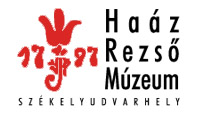Kovács Petronella (szerk.): Isis - Erdélyi magyar restaurátor füzetek 20. (Székelyudvarhely, 2020)
Focht Anna: Gorka Géza padlóváza restaurálása
The other furniture showed bright red paints that were different in colour-tone and composition from the previous one. The bright reds contained cinnabar, red lead and gypsum or chalk/lime. The brightness is probably due to the pigment cinnabar. The wall hanger for jugs and plates also contained some red ochre in the mixture. Flesh colour on the large wall cabinet: cinnabar, red lead and large amounts of gypsum or chalk/lime. Dark reddish-brown colour was determined to be dark red ochre (iron oxide red) mixed with gypsum or chalk/ lime. This colour was found only on the chest’s front, on the large wall cabinet and on the bench-chest. Yellow colour of the large wall cabinet and hanger proved to be orpiment and gypsum or chalk/lime; on the bench-chest: orpiment, gypsum or chalk/lime and little red ochre. Yellowish brown colour on the chest’s front: orpiment, yellow or red ochre and gypsum or chalk/lime. White colour is usually gypsum or chalk/lime. On the earliest dated furniture, the white pigment mixture was gypsum and quartz (sand, diatomaceous earth). The same result was concluded after examining the small wall cabinet, but additionally, lead white was also included in the mixture. The large wall cabinet had gypsum or chalk/lime and titanium white (probably natural). Greenish-blue or blue-greenish colour is a mixture of yellow and blue pigments. The analysis confirmed the presence of a mixture colour, the so-called orpiment-indigo green, which consists orpiment, organic blue (indigo?) and white pigment as fixative/filler for indigo, probably gypsum or chalk/lime and lead white, a traditional white pigment as an excellent opacity-increaser. Blue (pure) colour was only present on the hanger for jugs and plates in a form of indigo blue. The organic blue (indigo) is fixed on white pigment(s) such as gypsum or chalk/lime as fixative/filler and opacity-increaser. Brown colour was measured on the small wall cabinet and proved to be burnt umber, and on the large wall cabinet brown is probably organic. Black colour: carbon black was found on the chest’s front, on the large wall cabinet and on the hanger. Magnetite black was applied on the hanger for the stalks of flowers and leaves. Each of the investigated furniture was painted with an amazing and rare blend colour, indigo green, which is little known and less used today. This colour was often applied as background colour of painted furniture from the 17-18th century in Transylvania in different shades and tones ranging from green to blue. We have previously dealt with indigo green paints, which are mixtures, prepared of orpiment and indigo fixed on white pigments. The study presents a brief summary with references on orpiment-indigo green and its components, including historical use in medieval and modern painting technical sources and in documents related to the techniques and recipes (written by Cennini (1390), found in the Bologna Manuscript (mid-15th century), in manuscripts from Csíkszenttamás (Tomeşti), Transylvania by Antal Ferentz (1828), etc. Properties, preparation of the colour, aging, fading of orpiment-indigo green and its components have been established, and as well as it’s early use (8th-14th century) in codex paintings, which was investigated and evidenced by combined (pXRF and Raman) analysis of indigo green and indigo blue paints. Dr. András Morgás Chemical engineer, wood and furniture conservator MA Dr István Sajó Chemist Dr Takeshi Minami Chemist Translated by: András Morgós Ecaterina Constantinescu - Katharina Lindner-Barth -Andrei Buda Conservation of a wall cabinet from the 18"‘century The baroque wall cabinet was discovered in a house in Kisapold (Apoldu de Jos, Sibiu County, Romania) purchased by an antiquities collector. The object, originally used to store certain food as well as personal items, was inserted into the wall of the house. The painted front panel decorated with curved appliqué elements and turned half-columns was visible, but the back box structure was hidden. The monochrome layer of paint seemed to be overpainting because there were evidences of an earlier floral-themed painting revealed in raking light. This was confirmed by X-ray examinations and by microscopic cross-section results. There were no observable traces of infection caused by insects or fungus on the wood of the wall cabinet, but it had damages caused by shrinkage of the wood and usage. Cracks appeared in the planks and some elements moved apart from each other, the pedestal of one of the half-columns was incomplete, the inner parts and the shelves were covered by greasy impurities. Both the original paint layer and the overpainting cracked in the same direction as the wood grain. According to solving tests, the overpainting was removed using a mixture of dimethylformamide (DMF) and nitro thinner poultices. After cleaning, the original decoration was revealed: on the door a heart-shaped flower in a vase, blue, red and yellow tulips and on the columns colourful marbling. As an unexpected result of the intervention, the year - 1782 — and the name of the former owner, Christian Strum emerged, painted on the upper board of the facade. The original paint layer was in relatively good condition, only partial detachment was observable. The flaking paint layer was adhered using a 5% fish glue solution 233
